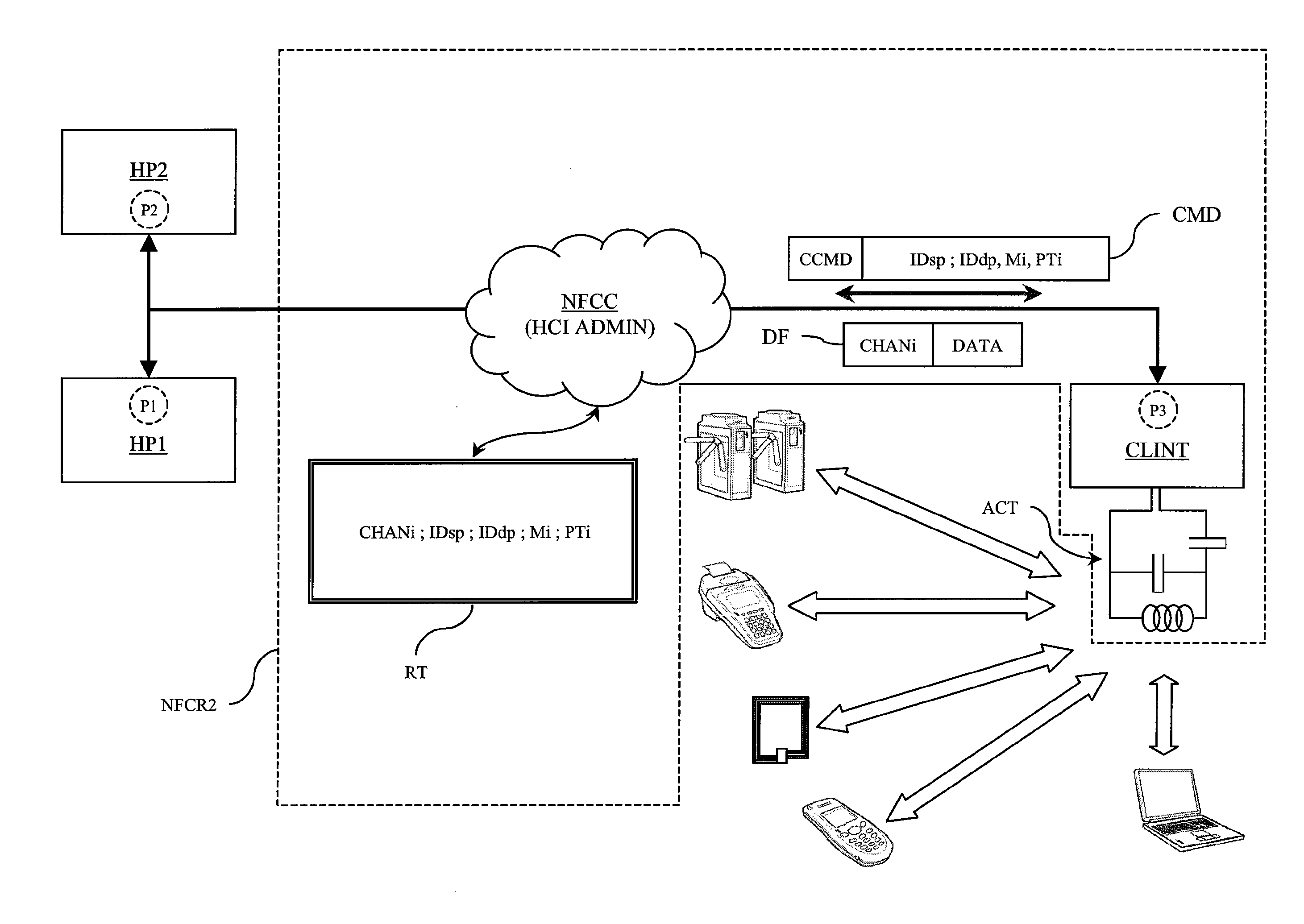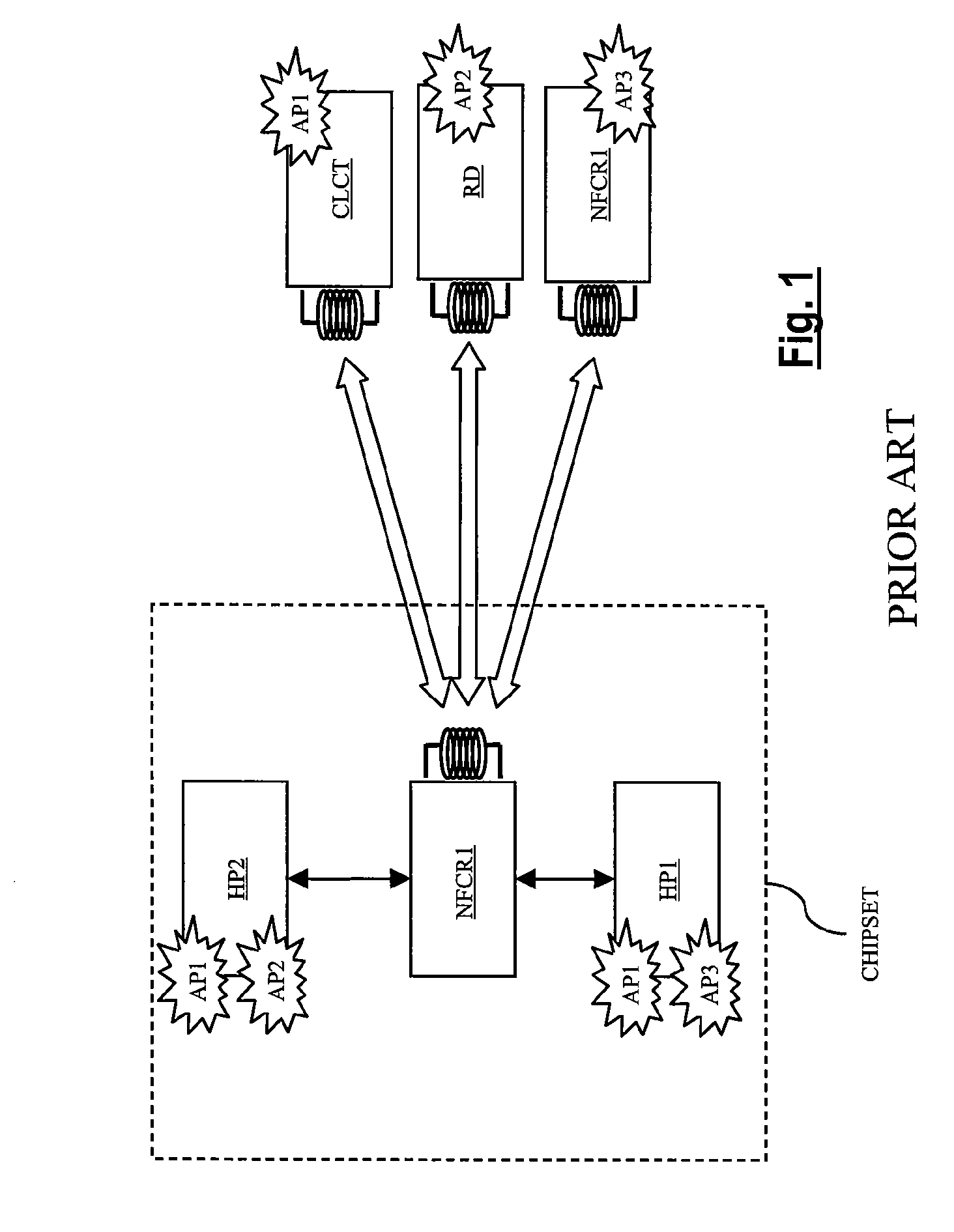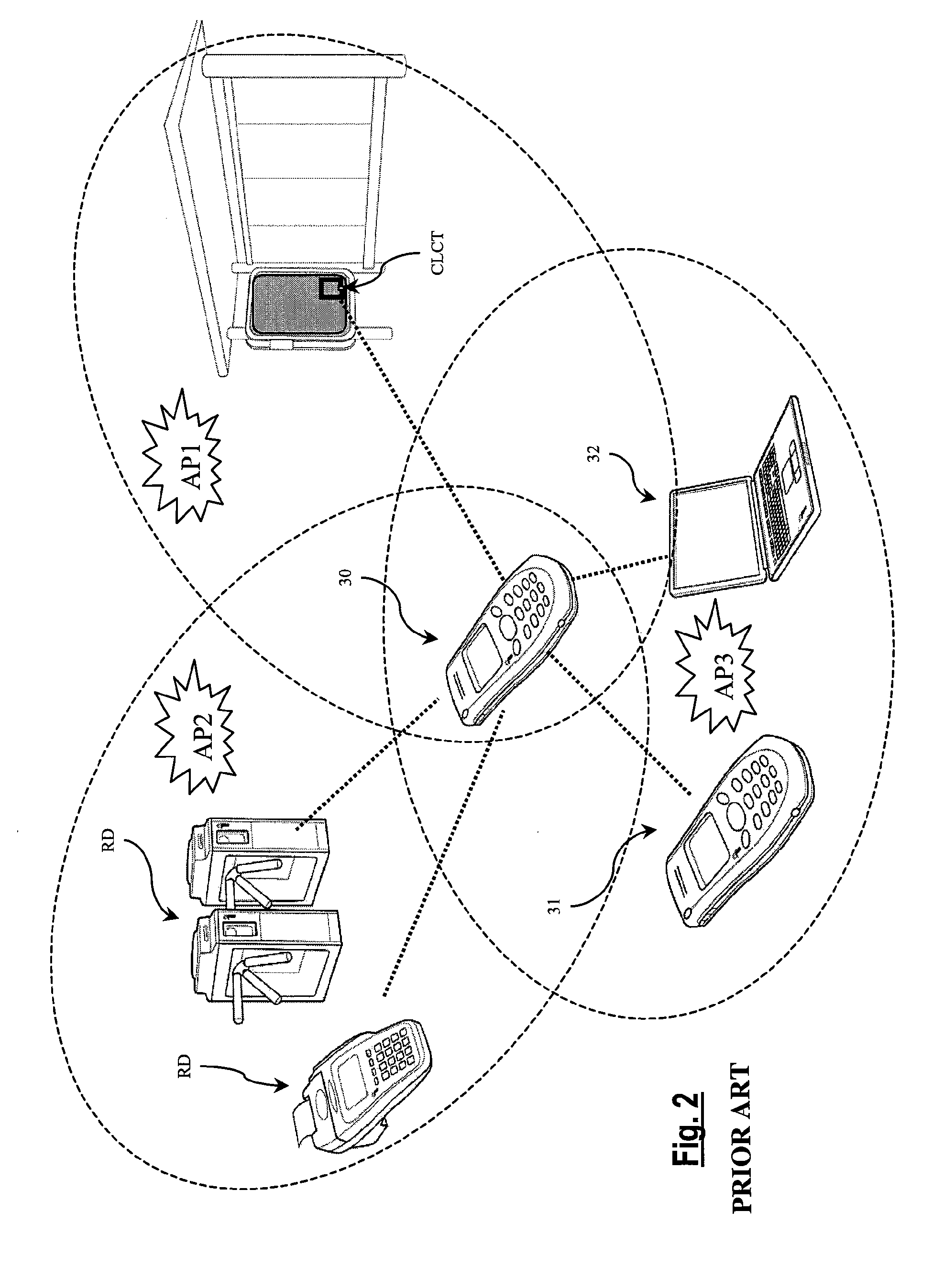Method for routing incoming and outgoing data in an NFC chipset
a technology of incoming and outgoing data and chipset, which is applied in the field of routing data in a chipset, can solve the problems of a certain number of practical problems, insufficient for one of the processors, and frames with long and complex header fields
- Summary
- Abstract
- Description
- Claims
- Application Information
AI Technical Summary
Benefits of technology
Problems solved by technology
Method used
Image
Examples
Embodiment Construction
[0055]FIG. 4 schematically shows the implementation of the routing method according to a preferred embodiment of the present invention. The method is implemented in an NFC chipset comprising an NFC reader referenced “NFCR2” and host processors HP1, HP2 as described above. The reader NFCR2 comprises the same units as the reader NFCR1 described above, particularly a controller NFCC and a contactless data send / receive interface CLINT equipped with an antenna circuit ACT. For the sake of simplicity, it is assumed that the interface CLINT can only send or receive data according to three protocols PTi, i.e., the protocol PT1 (ISO 14443-A or “ISOA”), the protocol PT2 (ISO 14443-B or “ISOB”), and the protocol PT3 (ISO 15693 or “ISO15”). The interface CLINT further has the three abovementioned operating modes Mi, i.e., M1 (“reader” mode), M2 (“card emulation” mode), and M3 (“device” mode).
[0056]Source or destination points of a data stream in the chipset are designated P1 (point located in t...
PUM
 Login to View More
Login to View More Abstract
Description
Claims
Application Information
 Login to View More
Login to View More - R&D
- Intellectual Property
- Life Sciences
- Materials
- Tech Scout
- Unparalleled Data Quality
- Higher Quality Content
- 60% Fewer Hallucinations
Browse by: Latest US Patents, China's latest patents, Technical Efficacy Thesaurus, Application Domain, Technology Topic, Popular Technical Reports.
© 2025 PatSnap. All rights reserved.Legal|Privacy policy|Modern Slavery Act Transparency Statement|Sitemap|About US| Contact US: help@patsnap.com



